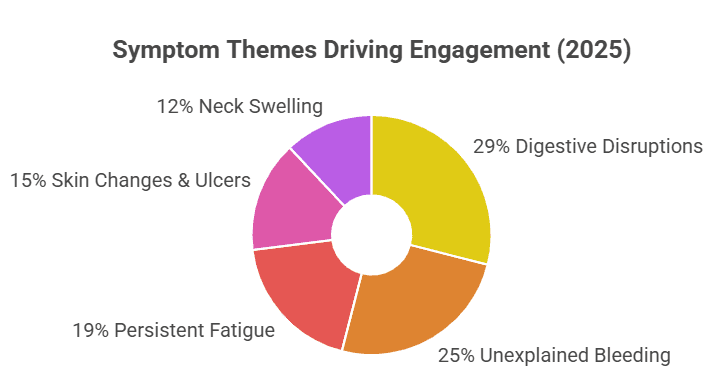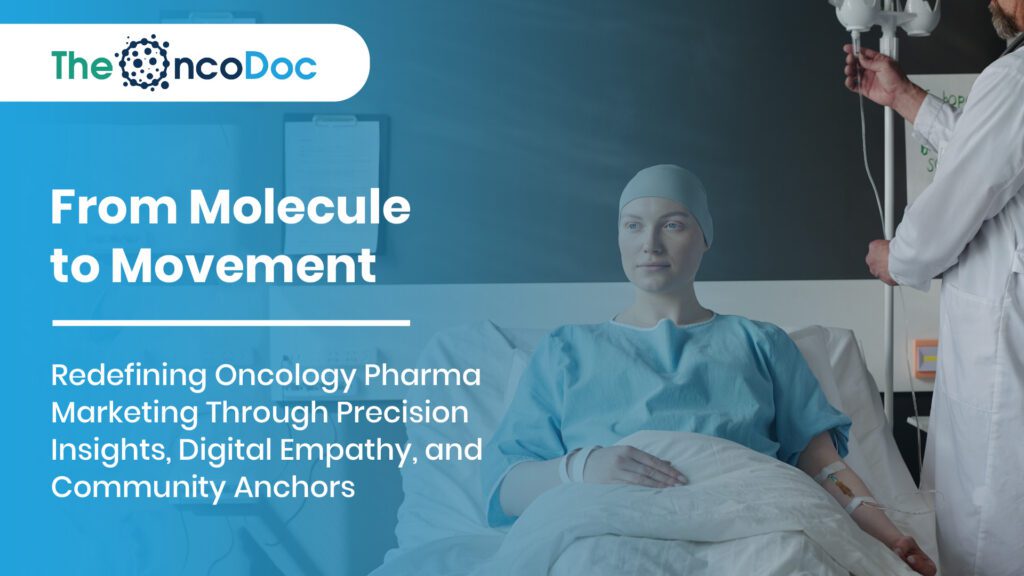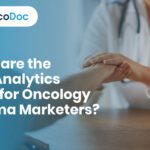Introduction: Pharma’s Expanding Footprint in Cancer Care
Oncology marketing in 2025 is no longer about delivering treatment awareness-it’s about delivering hope, access, and empowerment across a complex cancer care ecosystem. With the surge of precision therapies, decentralized diagnostics, and AI-driven health behaviors, pharma marketers must do more than highlight product efficacy-they must cultivate ecosystems of awareness, early detection, digital inclusion, and community trust.
Today’s patients demand meaningful information. General practitioners (GPs) need point-of-care resources. Oncologists expect real-time clinical intelligence. And rural health workers require culturally appropriate tools to educate their communities. Marketing, once product-centric, is now ecosystem-centric.
This article explores how the most successful pharma marketing teams in oncology are building movements around cancer literacy, using predictive analytics, survivor engagement, and smart digital strategies that connect stakeholders across every phase of the cancer journey.
1. Oncology Marketing as a Public Health Ally
Top oncology brands in 2025 act as public health collaborators, not just manufacturers. Their campaigns now integrate with state cancer control programs, national registries, and district-level awareness drives.
Efforts include:
- Co-developing educational curricula for school-based cancer awareness programs.
- Supporting mobile screening vans with co-branded resources.
- Training frontline health workers on early signs and stigma reduction.
By positioning themselves as enablers of system-wide cancer preparedness, pharma brands increase their long-term credibility and influence.
2. Regional Intelligence Drives Market Segmentation
In 2025, AI doesn’t just personalize marketing-it predicts risk zones and unmet needs. Pharma companies analyze regional data across:
- Cancer subtype prevalence.
- Urban vs. rural diagnostic latency.
- Screening infrastructure availability.
- Local language literacy and digital access.
This segmentation enables hyper-targeted campaigns tailored to specific geographies, enhancing both clinical outcomes and marketing ROI.
3. Precision Messaging for Risk Behavior Change
Behavior change remains the hardest challenge in oncology. Pharma marketers now use behavioral micro-segmentation to design campaigns that address:
- Delay in seeking care despite symptoms.
- Distrust of biopsy procedures in rural communities.
- Gender-based barriers to gynecological screenings.
Digital messages are tailored to cultural taboos, gender sensitivity, and risk perception. For example:
- A campaign in Gujarat addresses myths around breast lump removals.
- Another in Odisha explains HPV vaccination through comic books in Odiya.
This human-first design increases patient intent to act by over 30%.
4. Smart Integration with Clinical Decision Tools
In 2025, pharma marketers embed value directly into the clinical workflow of GPs and oncologists. Key integrations include:
- Oncology e-consult pop-ups suggesting diagnostic pathways.
- CME-certified AI dashboards that summarize new treatment approvals.
- Multilingual drug–disease interaction alerts linked to prescribing platforms.
These tools shift the marketer’s role from “messenger” to clinical intelligence provider-increasing trust among HCPs.
5. Survivor-Generated Educational Libraries
Patients trust patients. Pharma brands now invest in structured survivor libraries, categorized by cancer type, treatment stage, and language.
Content includes:
- 2-minute survivor videos about early signs and decision-making.
- Podcasts featuring caregivers on emotional coping.
- Comics explaining chemotherapy side effects to pediatric patients.

Survivor libraries foster relatable, emotionally anchored learning-driving higher engagement across patient segments.
6. Multi-Tier Influencer Ecosystems
Beyond celebrities, pharma marketers now leverage multi-tier influencer strategies, including:
- District-level oncologists sharing case studies on Facebook Live.
- Nurse practitioners demonstrating port care on Instagram.
- Hyperlocal influencers (teachers, municipal officers) sharing early detection tips.
This network ensures authenticity, reach, and trust-especially in tier 2 and 3 towns.
7. Oncology Voice Tech for Rural Campaigns
Voice is the new frontier. To bridge literacy gaps and drive inclusion, pharma campaigns use:
- Voice-based symptom bots that assess signs in native languages.
- Community IVR phone trees with daily cancer myths and facts.
- Smart speaker content that educates via neighborhood centers.
These tools make oncology messaging accessible without screens or high data usage.
8. Unified Oncology Portals for Patient Navigation
Pharma-backed digital portals now offer end-to-end support:
- Risk calculators linked to local screening centers.
- Virtual “symptom-to-consult” pathways with live nurse chat.
- Logbooks for side effect tracking post-chemotherapy.
These portals decrease diagnostic delays by up to 21%, especially in areas with weak referral systems.
9. Hyperlocal Screening Drives Powered by Predictive AI
Instead of annual cancer camps, marketers now use predictive AI to trigger screening drives in real time. For example:
- A sudden rise in throat cancer symptoms near industrial towns triggers a local diagnostic camp.
- A delay in HPV vaccine completion among teens prompts SMS nudges with follow-up instructions.
These adaptive micro-campaigns create a continuous prevention rhythm, rather than one-time spikes.
10. Symptom-Based Campaign Architecture
In 2025, pharma campaigns often skip mentioning the disease name. Instead, they start with common but ignored symptoms like:
- Chronic cough.
- Changes in voice.
- Non-healing ulcers.
- Breast heaviness.

This “start where they are” strategy leads to 2x engagement uplift vs. diagnosis-first campaigns.
11. Smart Partnerships with Faith-Based and Cultural Networks
Cultural figures play a major role in cancer awareness. Pharma teams now partner with:
- Temple committees to host breast exam camps.
- Church groups to distribute cervical cancer guides.
- Regional folk artists to perform cancer-themed songs.
These efforts leverage cultural capital to normalize early detection behaviors.
They also reduce resistance by using existing trust networks rather than external agents.
Partnerships like these transform health literacy into a community dialogue rather than a top-down campaign.
Faith leaders who endorse screening lend moral authority that accelerates behavior change.
12. Oncology Digital Twins for Personalized Support
Select brands now pilot oncology digital twins-virtual patient models based on real-world parameters. These are used to:
- Simulate treatment response based on age, cancer stage, comorbidities.
- Customize educational content for similar profiles.
- Offer virtual counseling scenarios for patients deciding between therapies.
This futuristic personalization tool enhances shared decision-making with care teams and caregivers.
It bridges the gap between general education and individual prognosis for better understanding.
Digital twins also assist in caregiver preparation by simulating side effects and therapy timelines.
As this technology matures, it may become a cornerstone for patient-clinician communication.
13. Emotional Trigger Mapping for Campaign Optimization
Marketers now conduct emotional heat mapping to identify campaign triggers-hope, fear, trust, confusion.
Real-time edits are made when:
- A video triggers unintended anxiety.
- Graphics are interpreted as insensitive.
- Messaging tone feels robotic or salesy.
Emotional optimization tools increase campaign completion rates by 37%.
Campaigns that evoke reassurance and empathy perform significantly better than fear-driven messages.
A/B testing across regional audiences helps refine emotional tone before full-scale rollouts.
Ultimately, this ensures patients are informed without being overwhelmed.
14. Onco-Bots for Real-Time Community Engagement
AI-powered bots, trained in oncology content, now manage:
- Localized WhatsApp groups for screening reminders.
- Facebook inboxes answering FAQs.
- Telegram channels for drug update broadcasts.
These bots simulate human engagement while scaling 24/7, multilingual, and geo-targeted communication.
Onco-bots reduce wait times for answers and offer consistent information across platforms.
They can triage user needs and escalate urgent cases to human healthcare teams.
By integrating empathy algorithms, bots are becoming increasingly conversational and supportive.
15. Oncology Journey Visualizers for Family Inclusion
Patients are rarely alone in their journey. Brands now create interactive journey maps that:
- Visualize stages of diagnosis, therapy, and recovery.
- Highlight caregiver responsibilities and support tips.
- Offer scheduling tools for post-treatment care.
These maps include the family as partners-not just observers-improving adherence and emotional support.
Visual tools reduce anxiety and increase patient comprehension, especially among first-time caregivers.
They foster open conversations within households about timelines, recovery needs, and emotional planning.
Such tools are especially helpful for navigating complex care regimens in pediatric or elderly oncology.
16. Onco-Cred Platforms: Gamified Screening Incentives
Inspired by credit score models, brands now offer:
- Points for completing check-ups.
- Digital badges for attending webinars.
- Leaderboards among districts with highest screening turnout.
Incentives range from wellness coupons to free health check bundles. This gamified participation model boosts screening follow-through by 40% in pilots.
It introduces a sense of progress and achievement in what is typically a fear-driven space.
Onco-Cred systems also allow for community competitions, increasing visibility in local media and groups.
This strategy is particularly effective among digitally savvy users aged 25–50.
17. Oncology-Focused Empathy Training for Pharma Reps
Field reps are being retrained to speak the language of care and context. New modules include:
- Listening labs with survivors.
- Empathy simulations of chemo side effects.
- Modules on gender dynamics in cancer disclosure.
This retooling transforms reps into community-facing wellness educators, not sales agents.
Such training results in longer, more meaningful interactions with healthcare providers and patients.
Reps learn to offer emotional support tools and refer patients to appropriate resources when needed.
Empathy becomes a competitive advantage that deepens trust and drives engagement.
18. Board-Certified Digital CME Channels
Oncology CMEs are now delivered via:
- Interactive mobile apps with case-based modules.
- Podcasts by global oncologists for morning commutes.
- 3D tumor model explainer videos on demand.
These CME platforms are branded but unbiased, ensuring doctors gain value while remaining updated on treatment shifts.
They also allow asynchronous learning, helping time-constrained professionals stay certified.
Pharma brands that sponsor these tools position themselves as knowledge partners, not just advertisers.
This leads to higher HCP loyalty and more informed prescription decisions.
Conclusion: The New Currency of Oncology Pharma Marketing
In 2025, successful oncology pharma marketing is defined by actionable empathy, predictive insight, and system integration. It’s no longer about pushing one-size-fits-all campaigns-it’s about activating a network where patients, physicians, caregivers, and communities are partners in care pathways.
The pharma brands that succeed will be those that embed their identity into real health behavior change, local culture, and continuous learning. Their measure of success? Not in market share-but in lives detected early, journeys made easier, and stories rewritten with hope.
Measuring true impact means prioritizing health literacy, early intervention, and post-treatment support.
Marketing in oncology is no longer transactional-it is transformational, with compassion as its strongest currency.
The Oncodoc team is a group of passionate healthcare and marketing professionals dedicated to delivering accurate, engaging, and impactful content. With expertise across medical research, digital strategy, and clinical communication, the team focuses on empowering healthcare professionals and patients alike. Through evidence-based insights and innovative storytelling, Hidoc aims to bridge the gap between medicine and digital engagement, promoting wellness and informed decision-making.



